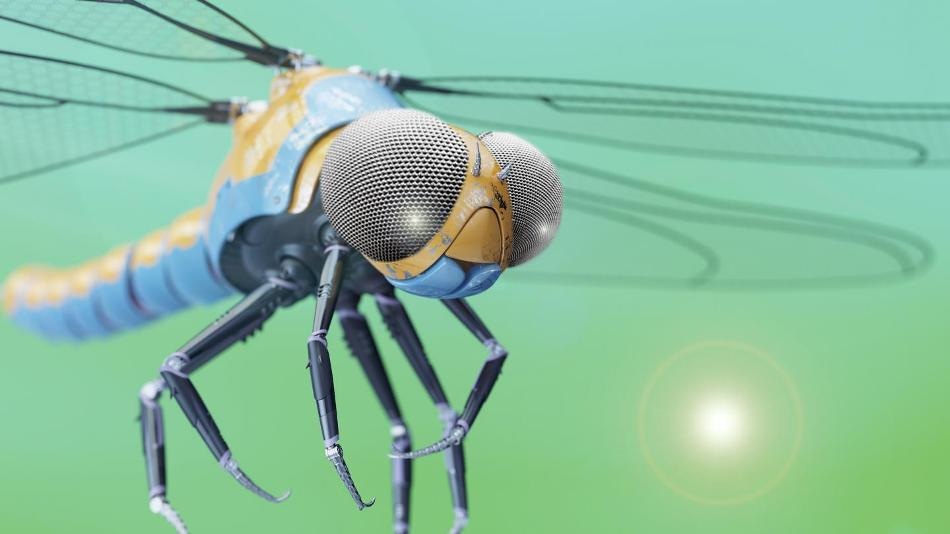Aug 20 2019
Insects respond to movements very quickly—a fact that would be known to those who have attempted to swat a fly.
 Researchers have created a bio-inspired compound eye that is helping scientists understand how insects sense an object and its trajectory with such speed. The compound eye could also be useful for 3D location systems for robots, self-driving cars, and unmanned aerial vehicles. (Image credit: Le Song, Tianjin University)
Researchers have created a bio-inspired compound eye that is helping scientists understand how insects sense an object and its trajectory with such speed. The compound eye could also be useful for 3D location systems for robots, self-driving cars, and unmanned aerial vehicles. (Image credit: Le Song, Tianjin University)
Now, researchers are using a newly developed biologically inspired compound eye to figure out how insects sense an object and its trajectory with such dramatic speed through their compound eyes.
Moreover, the compound eye can possibly be utilized with a camera to develop 3D location systems for unmanned aerial vehicles, self-driving cars, and robots.
Scientists from Tianjin University in China have described their latest bio-inspired compound eye in Optics Letters—The Optical Society (OSA) journal. The compound eye looks similar to that of an insect and also operates just like its natural counterpart.
Compound eyes contain repeating units that range from hundreds to thousands in numbers. Referred to as ommatidia, each of the repeating units works as a separate visual receptor.
Imitating the vision system of insects has led us to believe that they might detect the trajectory of an object based on the light intensity coming from that object rather than using precise images like human vision. This motion-detection method requires less information, allowing the insect to quickly react to a threat.
Le Song, Research Team Member, Tianjin University
Imitating an Insect Eye
The scientists employed a technique called single-point diamond turning to develop 169 microlenses on the compound eye surface. Each microlens had around 1 mm radius, producing a component that measured approximately 20 mm.
This component can identify objects from a 90° field of view. Just like how ommatidia do for most of the insects, the fields of view of neighboring microlenses overlapped in the same manner.
One difficulty that is faced while creating an artificial compound eye is that the compound eye surface is curved, while image detectors are flat. However, when the researchers placed a light guide between the image detector and the curved lens, they were able to resolve this challenge while the component also received uniform light from various different angles.
“This uniform light receiving ability of our bio-inspired compound eye is more similar to biological compound eyes and better imitates the biological mechanism than previous attempts at replicating a compound eye,” Song explained.
To utilize the artificial compound eye for determining 3D trajectory, the researchers introduced grids to each of the eyelets that helped in identifying a location. Next, they positioned LED light sources at known directions and distances from the compound eye and utilized an algorithm to measure the LEDs’ 3D location based on the intensity and location of the light.
The scientists observed that the compound eye system quickly provided an object’s 3D location, but when the light sources were farther away, the precision of that location was reduced. This may explain why the majority of insects are nearsighted.
How Insects See the World
This design allowed us to prove that the compound eye could identify an object’s location based on its brightness instead of a complex image process. This highly sensitive mechanism suits the brain processing ability of insects very well and helps them avoid predators.
Le Song, Research Team Member, Tianjin University
According to the scientists, the potential of the novel bio-inspired compound eye to identify the 3D location of an object may prove handy for tiny robots needing rapid detection from a very lightweight system. In addition, it provides a new technique for biologists to examine the insects’ visual systems.
The scientists are now planning to insert the localization algorithm into platforms like integrated circuits, which would allow them to integrate the compound eye system into other types of devices. The team is also developing ways for large-scale production of compound eye lenses to bring down the cost of the units.